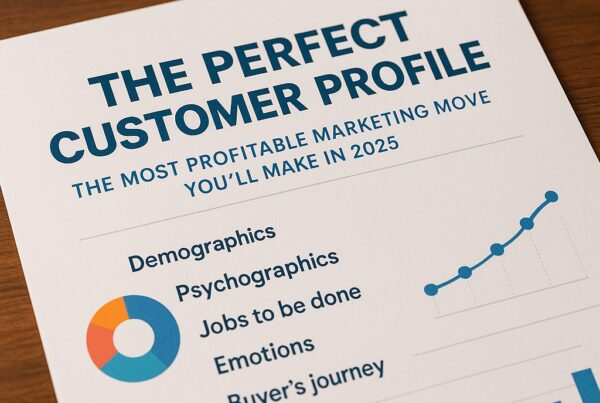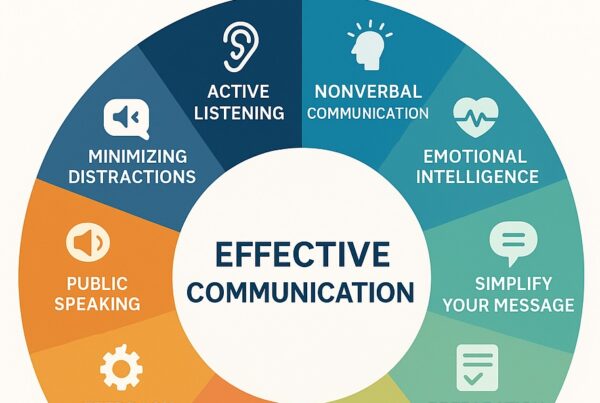Mastering the Marketing Conundrum: Simplifying the Complex for Impactful Results
Welcome to the dynamic realm of marketing – a world that’s as challenging as it is rewarding. As the marketing landscape evolves, so do the challenges we face. Today, we’re navigating through a complex jungle of technology advancements, data overload, and ever-changing consumer behaviour. But fear not! The labyrinth of marketing complexity is not insurmountable. With the right approach, we can simplify the complex, maximize our impact, and achieve impressive results – this is where “the marketing conundrum simplifying the complex for impactful results” comes into play.
This journey isn’t just about surviving; it’s about thriving. It’s about understanding the challenges and turning them into opportunities. It’s about streamlining our marketing strategies, leveraging technology, enhancing our in-house team skills, and understanding the role of outsourcing. So, put on your explorer’s hat, and let’s embark on this intriguing journey, guided by the marketing conundrum simplifying the complex for impactful results!
Key Takeaways
- Marketing is becoming increasingly complex, but streamlining strategies can help maximize impact.
- Identifying key areas and setting clear goals are essential for successful marketing efforts.
- Leveraging technology, outsourcing services, enhancing in-house staff skills & continuous learning can simplify the complexity of marketing operations for improved outcomes.
Ready to demystify your marketing strategies and drive impactful results? Book a call with our expert coach today and take the first step toward transforming your marketing approach!
The Complexity Challenge in Marketing

Picture the task of solving a puzzle with an increasing number of pieces. This analogy aptly describes the complexity marketers have to deal with today. Advancements in technology, the digital transformation boom post-Covid, and the subsequent shift to remote work have all amplified the complexity. But the plot thickens. Add to this a growing amount of regulation and economic turmoil, and you have a whirlwind of challenges that could give even the seasoned marketer a run for their money.
But the complexities don’t just add challenges; they also add opportunities. Brands now have the chance to be part of a technological ‘galaxy of delights’, as customers spend more time on electronic devices. In fact, 88% of UK marketers are implementing elements of content marketing, and 55% of retailers have personalization as their primary focus.
As marketers, we need to:
- Rationalize tech stacks, technology partners, and talent
- Explore alternative solutions that offer access to new functionalities
- Engage technology providers to ensure we are future-ready.
But how do we begin to manage this complex beast?
Streamlining Your Marketing Strategy for Maximum Impact

Navigating through marketing complexity can seem like walking through a maze. But what if we had a map to guide us? Streamlining our marketing strategy is like creating that map. It helps us identify key areas, set clear goals, and prioritize our efforts. This approach doesn’t just simplify our marketing processes; it also maximizes our impact.
We’ve all heard the saying, “less is more”. This couldn’t be truer in the world of marketing. By focusing on key areas such as:
- landing page design principles
- adopting a mobile-first approach
- establishing clear goals
- prioritizing our efforts based on a Google Analytics checklist post-launch
By providing the right support, we can achieve better results. This enhances our conversion and lead generation for B2B companies and ensures we keep our eyes on the prize.
We now turn to the specifics of streamlining our marketing strategy.
Identifying Key Areas
Imagine searching for a needle in a haystack. Difficult, isn’t it? Now, what if you had a powerful magnet? Suddenly, the task becomes a lot easier. Identifying key areas in our marketing strategy works in the same way. It acts like a magnet, drawing us towards the most critical aspects requiring attention and improvement.
Identifying key areas helps us understand customer needs, preferences, and behaviours. This way, we can tailor our marketing messages and tactics to reach and engage our target audience effectively. It’s like having a compass that points us toward potential opportunities for growth and innovation, as well as potential threats and challenges in the market.
To conclude, pinpointing key areas aids in making strategic decisions and resource allocation for the best outcomes. It enables us to:
- Gain a more comprehensive understanding of our target customers
- Eliminate unnecessary distractions
- Enhance our business
- Establish specific objectives and timeframes.
Setting Clear Goals
Setting clear goals is like setting the destination on our journey through the marketing landscape. It gives us a clear target to aim for and helps us measure our success and track our progress. When our marketing goals are well-defined, they:
- Guide our strategies and tactics
- Align with our bigger business objectives
- Allow us to evaluate progress, track performance, and make informed decisions to achieve our desired results
It’s like having a GPS that guides us on the most efficient route to our destination, helping us avoid detours and reach our goals faster.
Also, defining clear goals allows us to set specific metrics and performance indicators (KPIs) for assessing the effectiveness of our marketing efforts. Some examples of clear marketing goals include:
- increasing brand awareness
- enhancing brand engagement
- achieving higher search engine rankings
- driving website traffic
- enhancing brand reputation
- expanding market share
Prioritizing Efforts
Picture yourself juggling multiple balls in the air. Now, imagine you’re told to focus on keeping just one ball in the air. Suddenly, the task becomes a lot more manageable. That’s exactly what prioritizing efforts does. It helps us focus our resources and time on the most important marketing tasks, ensuring that the most impactful activities are executed first.
An example of a successful marketing campaign that effectively prioritized efforts is Nike’s “Just Do It” campaign. This campaign has become iconic and has helped establish Nike as a leading athletic brand. Nike prioritized the message of motivation and empowerment, which resonated with their target audience.
Prioritizing efforts can help us:
- Avoid distractions
- Maintain focus
- Maximize the return on investment
- Achieve better outcomes
It’s like having a spotlight that illuminates the most crucial tasks, helping us focus our efforts where they matter most.
Leveraging Technology for Simplified Marketing Processes

In an age where new technologies are advancing at warp speed, we have an arsenal of tools at our disposal that can simplify our marketing processes. By leveraging technology and utilizing various technologies, we can automate repetitive tasks, gain insights from data analytics, and enhance collaboration within our teams.
Popular marketing automation tools like HubSpot Marketing Automation, Sender, and ManyChat are like virtual assistants that help us streamline our workflows, save time, and improve efficiency. With data analytics, we can measure and optimize our marketing campaigns, align our goals, and identify opportunities for improvement. Integration and collaboration tools, on the other hand, are like digital meeting rooms that bolster productivity, facilitate communication, and enable remote work.
Let’s examine in more detail how technology can simplify our marketing processes.
Marketing Automation
Marketing automation is like a Swiss army knife for marketers. It’s a versatile tool that helps us automate repetitive tasks, optimize our marketing strategies, generate leads, and personalize the conversion process. By automating tasks such as sending follow-up emails, posting social media updates, and segmenting audiences, marketing automation tools help us streamline our internal processes and enhance efficiency.
When considering a marketing automation tool, factors like strong social media management features, lead management, analytics and reporting, system integration, personalized content creation, and security measures should be taken into account. Implementing marketing automation can lead to increased efficiency, improved marketing and sales alignment, higher conversion rates, accurate reporting, and enhanced customer experiences.
Data Analytics
Data analytics is like a magnifying glass for marketers. It helps us see the finer details, offering valuable insights and enabling us to make data-driven decisions.
Data analytics can enhance the efficacy of our marketing campaigns by accurately labelling campaigns, recognizing our target demographic, and recognizing essential performance indicators (KPIs). By utilizing data analytics tools like SEMrush and Google Analytics, we can monitor our progress and make decisions based on data.
Data analytics not only enhances our decision-making capabilities but also helps us refine our strategies and gain better outcomes.
Integration and Collaboration Tools
Integration and collaboration tools are like a well-oiled machine, making our marketing processes run smoothly and efficiently. Integration tools like Improvado and data pipelines help us optimize our data management processes. They aid in promoting collaboration between specialists from various areas, such as product, sales, design, and analytics, boosting our marketing effectiveness.
On the other hand, collaboration tools enhance communication within our teams, improving our overall coordination and productivity. They store conversations in text format, aiding organization and customer focus, thereby expediting and simplifying collaboration.
Enhancing In-House Staff Skills for Improved Results

Imagine having a team of marketing superheroes, each with a unique superpower. That’s what enhancing in-house staff skills can do. It equips each team member with the requisite skills and knowledge, making them more productive and efficient in their roles, leading to improved marketing results.
Developing the marketing capabilities of our in-house staff opens the doorway to:
- specialized capabilities and knowledge
- increased adaptability and scalability
- novel views and creative concepts
- heightened brand recognition
- improved communication and oversight
We now turn to ways of transforming our marketing team into marketing superheroes.
Continuous Learning
Continuous learning is like the fuel that keeps our marketing engine running smoothly. It keeps us updated with:
- the latest industry developments
- consumer behaviour patterns
- technological advancements
- best practices
Some ways we can promote continuous learning include:
- Staying abreast of industry blogs and publications
- Attending conferences and workshops
- Networking with other professionals
- Seeking feedback
Continuous learning not only increases our skills and expertise but it also keeps us informed of industry trends, enabling us to be agile in the face of change and more adept in resolving issues.
Cross-Functional Training
Cross-functional training is like a multi-tool for marketers, providing functionality through various skills, making us versatile and adaptable.
By breaking down silos and encouraging collaboration among different teams within our organization, cross-functional training can:
- Increase efficiency
- Foster professional development
- Improve team performance
- Promote overall cohesion within the organization.
Hence, whether it’s data analysis or aligning sales and marketing, cross-functional training allows us to take on different roles, shaping us into all-rounded marketers.
The Role of Outsourcing in Simplifying Marketing Complexity
While enhancing in-house staff skills is crucial, outsourcing certain marketing functions can be a game-changer. It’s like having an ace up our sleeve, allowing us to access industry expertise, save costs, and scale our marketing efforts more efficiently.
Outsourcing marketing services can yield cost savings due to the lower rates offered by outsourced vendors compared to hiring in-house employees. Moreover, it allows us to share operational expenses strategically, lowering the overall financial burden. We now examine how outsourcing can offer us a competitive advantage in the market.
Access to Industry Expertise
Accessing industry expertise is like having a secret recipe. It gives us a distinct edge, enabling us to craft more targeted messaging that resonates with our target audience, leading to higher engagement and conversion rates.
By accessing industry expertise through:
- Hiring industry experts
- Collaborating with industry associations
- Conducting market research
- Attending industry conferences and events
- Engaging with thought leaders and influencers
We can improve our marketing campaigns and stay ahead of the competition by understanding the industry landscape, market trends, and competitor strategies.
Cost Savings and Scalability
Cost savings and scalability in marketing are like a well-planned budget. They help us allocate our resources more efficiently, simplifying our marketing processes and achieving better results.
Outsourcing marketing services can lead to the following:
- Significant cost savings due to the lower rates offered by outsourced vendors
- Scalability, which facilitates the streamlining of marketing processes by automating repetitive tasks and producing goods or services at a faster rate without necessitating significant modifications
- Positive impact on quality, reputation, and market competitiveness
Case Studies: Simplifying Marketing for Commercial Success

We now turn to real-world examples of businesses that have recently successfully simplified their business process and marketing strategies for commercial gains. These case studies serve as travel journals, offering insightful lessons.
Companies like HubSpot, ClearVoice, ActiveCampaign, and Single Grain have shown us how simplifying marketing can lead to impressive results. Here are some examples:
- HubSpot has compiled compelling case studies to showcase its product and attract customers.
- ClearVoice has assembled a list of top case studies demonstrating how they enhance content creation.
- ActiveCampaign has utilized explanatory case studies in its marketing to break down complex concepts and make them more understandable.
- Single Grain has aided its clients in achieving better ROI through its digital marketing strategies.
Another example is Company X, which achieved improved commercial success by simplifying its marketing strategy through the use of personalized gifts. This had a notable effect on recipients. From these case studies, we can glean insights such as:
- The importance of being honest and building trust with customers
- The value of being flexible and adaptable
- The necessity of prioritizing the customer experience
- The utility of using social media for engagement purposes
Summary
We’ve journeyed through the complexities of marketing and discovered ways to simplify them for maximum impact. We’ve learned that the complexity challenge in marketing is not insurmountable. By streamlining our marketing strategies, leveraging technology, enhancing in-house staff skills, and understanding the role of outsourcing, we can easily navigate this complex landscape and achieve impressive results.
As marketing professionals, let’s embrace the complexities, for they are opportunities in disguise. Let’s continue to learn, adapt, innovate, and simplify. As the saying goes, “Simplicity is the ultimate sophistication.”
Don’t navigate the marketing maze alone. Schedule your coaching session now to unlock the full potential of your marketing efforts with expert guidance and personalized strategies!
Click here to book a call today!
Frequently Asked Questions
What is the complexity challenge faced by marketers?
Marketers face a complex challenge due to advances in technology, data overload and ever-changing consumer behaviour, making it difficult to achieve desired results from their strategies.
How can we streamline our marketing strategies for maximum impact?
To maximize impact and simplify processes, identify key areas of focus, set clear goals, and prioritize efforts to streamline marketing strategies.
How can technology be leveraged to simplify marketing processes?
Technology can be leveraged to simplify marketing processes through automation, data analytics and collaboration tools, making marketing more efficient and effective.
How can enhancing in-house staff skills lead to improved marketing results?
By providing continuous learning and cross-functional training, in-house staff can gain the necessary skills for improved marketing results and more streamlined processes.
How can outsourcing certain marketing functions benefit businesses?
Outsourcing certain marketing functions can give businesses access to industry expertise, cost savings, and the ability to scale their marketing efforts more efficiently – all providing powerful benefits for businesses.



